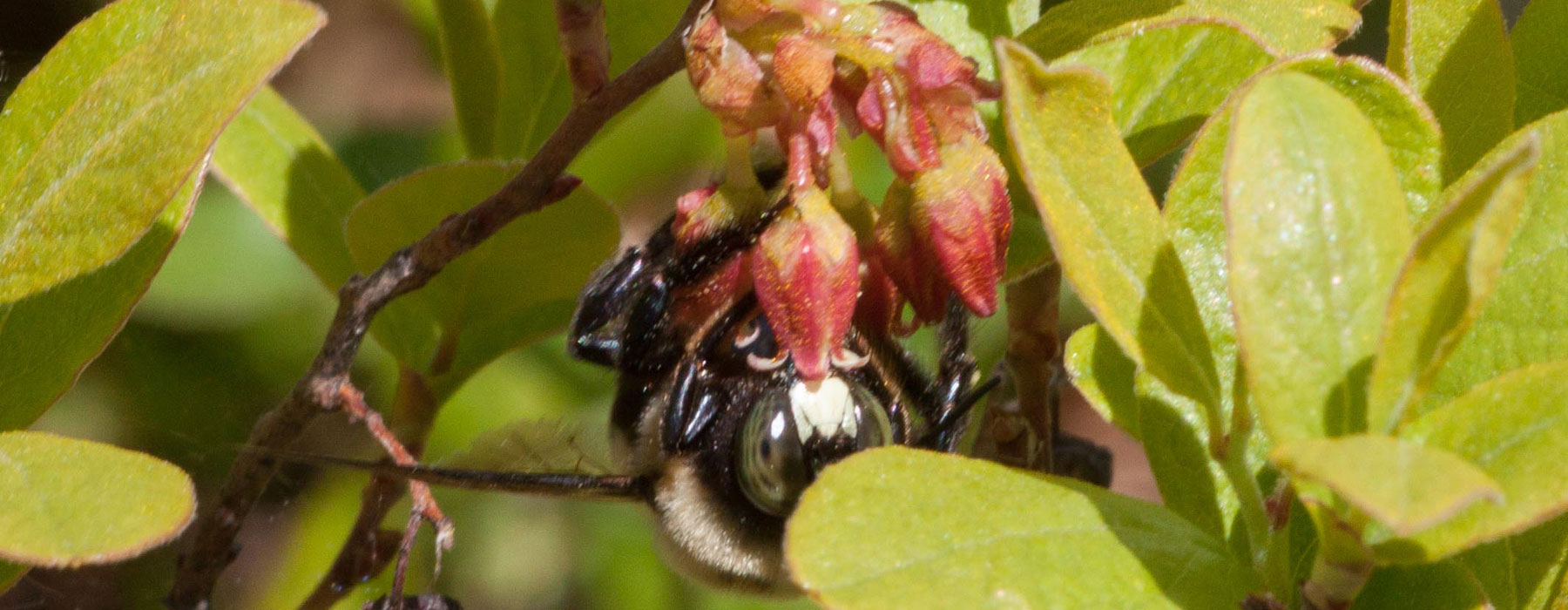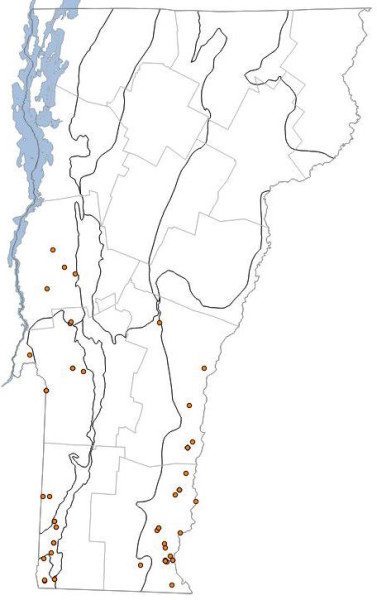X. virginica is common and widespread throughout the eastern United States and even into the middle parts of the country. This large, shiny bee is often mistaken for a bumble bee, but is a member of an entirely different genus. To build their nests, females bore holes into wooden structures (often man-made) and this species is therefore considered a pest. Though females can sting, they are docile and are also important pollinators.
Select food plants:
Hosts:
Similar Species:
General Phenology:
females:
males:
- Learn More:
Discover Life species page - Encyclopedia of Life species account
- Skandalis, D. A., Richards, M. H., Sformo, T. S., & Tattersall, G. J. (2011). Climate limitations on the distribution and phenology of a large carpenter bee, Xylocopa virginica (Hymenoptera: Apidae). Canadian Journal of Zoology, 89(9), 785-795. (PDF)








